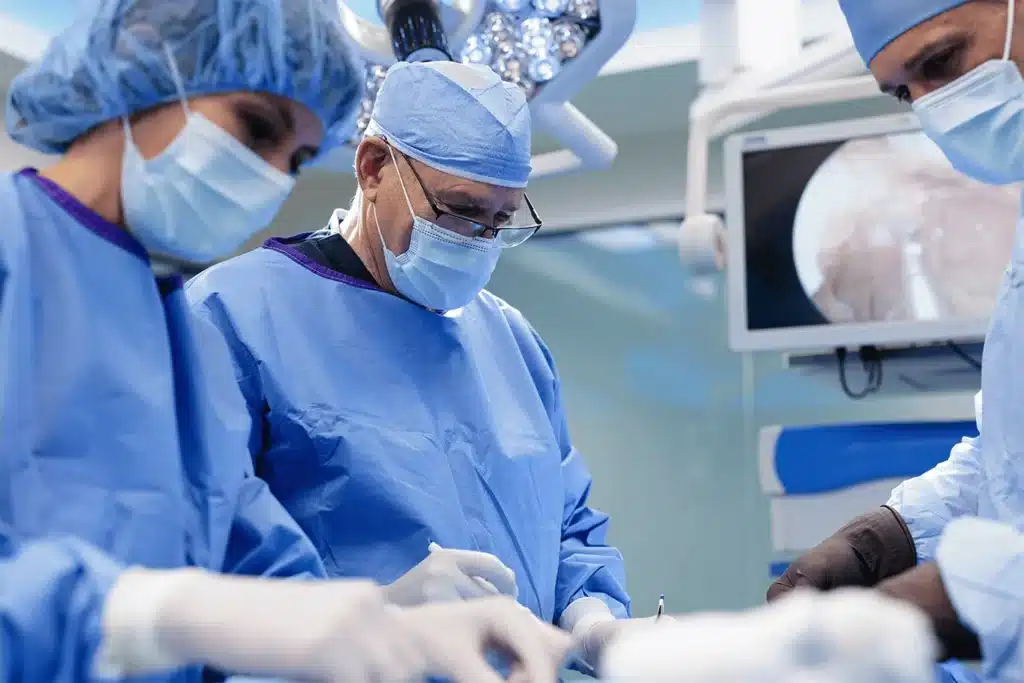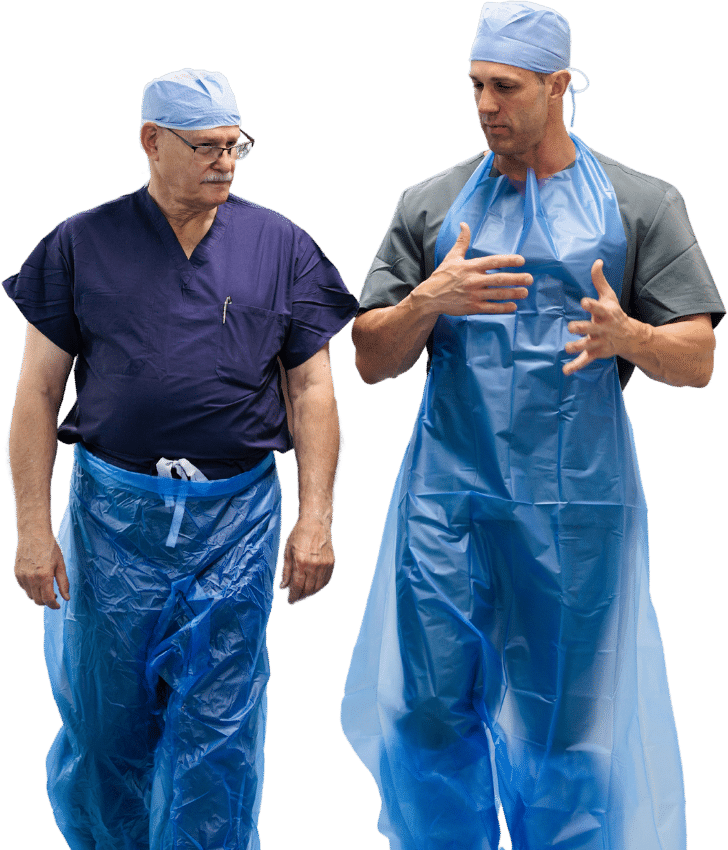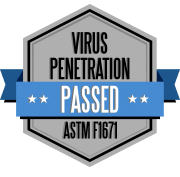- Breakthrough Surgical Technologies Shaping Today and Tomorrow
- Choosing the Right Disposable Medical Apparel for Today’s Procedures
- Surgical PPE’s Gold Standard: ASTM-F1671
- Comparing Essential Surgical PPE and Disposable Medical Apparel
- Hidden Cost Savings & Better Value with Higher-Quality PPE
- Surgical Safety Technology and the Importance of Infection Control
- The ROI on Premium Surgical PPE
- Why STA-DRI?
- Use ezGLIDE for Better Infection Control and Ergonomics
- Choose the PPE Designed by Surgeons, For Surgeons
You’re scrubbed and sterilized. Your team is ready. It’s time for surgery. If your surgical facility is stocking the latest and greatest in surgical safety technologies, you can walk into every surgery laser-focused on patient care instead of worrying about whether you’ll slip on a fluid-soaked floor or ruin yet another pair of shoes.
You and your surgical team want to be outfitted in high-tech protective gear and armed with advanced instruments designed to enhance precision and safety. Today’s medical field is rapidly evolving, with breakthrough surgical technologies and advanced personal protective equipment (PPE) promising to revolutionize surgical safety.
From artificial intelligence in operating rooms and the invention of smart surgical tools to leaps forward in PPE, modern advancements are pushing boundaries and setting new standards. These innovations are safeguarding medical professionals and their patients. Choosing the right disposable medical apparel and understanding guidelines (like ASTM F1671) are essential steps in protecting everyone involved.
Let’s explore these cutting-edge technologies and their impact on surgical procedures, staff and patient care, and your hospital’s bottom line. We’ll dive into smart instruments, AI applications, and disposable medical protective clothing essentials.
Breakthrough Surgical Technologies Shaping Today and Tomorrow
The world of surgery is constantly evolving. New technologies help medical professionals perform procedures more safely and efficiently. Innovations like AI, smart instruments, and advanced materials lead the way. These advancements not only increase surgical efficiency but also ensure better outcomes for patients. By understanding these innovations, healthcare workers can provide the best care possible.
AI & ML in the OR
Artificial intelligence (AI) and machine learning (ML) are transforming surgeries. In operating rooms, these technologies support surgeons in extraordinary ways. AI can analyze complex data swiftly, helping doctors make informed decisions quickly. ML can predict potential complications during surgery. This prediction ensures medical professionals are ready for any challenges. Such technologies improve surgical precision and reduce human error. As AI and ML continue to progress, their roles in surgeries will expand even more. Surgeons work smarter, not harder, thanks to these digital helpers.
Smart Instruments
Smart instruments are revolutionizing how surgeries are performed. These are tools with embedded technology that provide additional functions or data. An example is force-sensing instruments, which tell the surgeon how much pressure they are applying. There are also cameras and sensors that offer real-time feedback during surgery. These intelligent tools enhance a surgeon’s capabilities and improve surgical outcomes. The adoption of smart instruments is growing. This new wave of surgical gear allows healthcare professionals to perform operations more accurately and safely.
Advanced Materials, Advanced Safety
Today’s medical gear is made from incredible materials. Advanced materials are used in surgical procedures, implants, and PPE. These materials are often stronger, lighter, and safer than older ones. In surgical PPE, impermeable fabrics are a must. They have heat-sealed seams that prevent fluids from passing through. This is crucial for stopping blood-borne or fluid-borne pathogens during surgeries. Better materials mean better protection for healthcare professionals and their patients. Staying up-to-date with these advancements ensures everyone’s safety. As technology progresses, so will the quality and safety of surgical PPE.
Keep reading: Breakthrough Surgical Technologies Shaping Today and Tomorrow
Surgical Safety Technologies: Advanced PPE for Today’s Procedures
Choosing the right disposable medical apparel is the first line of defense in modern healthcare settings. Personal Protective Equipment (PPE) keeps everyone safe and helps maintain surgical efficiency. In today’s procedures, medical professionals need to ensure they use the correct gear. This means looking at the level of protection provided, the types of PPE required for specific tasks, and how everything works together to prevent cross-contamination. Knowing what to use and when can make all the difference in keeping patients and healthcare workers safe. Here are a few expert tips from our team here at Sloan Medical:
On the Level – Choosing the Right Protection
Different healthcare tasks require different levels of garment protection. These levels ensure medical professionals have the safety they need.
Level 1 garments offer basic protection, suitable for low-risk situations like routine check-ups.
For higher-risk tasks, such as drawing blood or working in the ICU, Level 2 protection is ideal. It helps safeguard against fluid penetration.
Level 3 garments are better for surgeries and emergency procedures, providing more protection against blood and other fluids.
Finally, Level 4 offers the highest protection for long, fluid-intense procedures.
Common PPE garments include surgical gowns, masks, and gloves. Choosing the right level keeps healthcare workers protected and supports surgical efficiency.
The 7 Types of Surgical PPE Your Stockroom Needs
Your stockroom should never be short on essential surgical PPE. Each type has a specific use.
- Knee highs are perfect for keeping feet and lower legs protected. They work well in environments where splashes or spills are likely.
- Shoe covers provide a barrier that prevents contaminants from spreading.
- Leggings are great for extended coverage, often paired with other gear to keep skin protected.
- Surgical gowns are staples in surgeries, offering critical protection from fluids.
- Aprons add an extra layer for those in direct contact with patients or during cleaning.
- Medical coveralls and medical jumpsuits provide full coverage, ideal for high-exposure situations.
- Finally, disposable patient transfer sheets help move patients safely without cross-contaminating surfaces.
Stock these PPE types to meet the varying needs of medical procedures.

Protecting Patients from Medical Cross Contamination
Using the right combination of disposable medical protective clothing and patient transfer sheets is vital for preventing cross-contamination in healthcare settings.
When healthcare professionals use the appropriate level of PPE, they create a safer environment. It minimizes the risk of spreading pathogens from worker to patient or between patients. Wearing the right gear reduces healthcare-acquired infections. For example, surgical gowns and gloves prevent the transmission of germs during invasive procedures. They act as barriers that block infectious agents.
This, combined with masks and footwear protection, keeps both staff and patients healthier. Surgical PPE ensures that medical and surgical safety measures are in place. By following these guidelines, the threat of medical cross-contamination lowers significantly.
Keep reading: Choosing the Right Disposable Medical Apparel for Today’s Procedures
Surgical PPE’s Gold Standard: ASTM-F1671
Surgical Personal Protective Equipment (PPE) is crucial for the safety of healthcare workers. One guideline that stands out is ASTM F1671. This standard is like a gold star. It helps ensure that surgical gear meets high safety standards. ASTM F1671 focuses on the materials used to make medical PPE. This standard helps protect against harmful pathogens and fluids. It plays a vital role in maintaining surgical safety and efficiency. Understanding ASTM F1671 is important for healthcare professionals. It reassures them that the gear they use offers reliable protection.
Who is ASTM?
ASTM International, which used to be the American Society for Testing and Materials, is a global leader in standards. They create and publish technical standards for many industries. This includes healthcare. Their mission is to improve safety, quality, and performance. ASTM’s work covers everything from materials to systems. In healthcare, they provide guidelines for surgical PPE. Their standards make sure the equipment performs as expected. They test and assess materials used in medical products. By doing so, ASTM helps ensure these products are safe for medical professionals and their patients.
What is ASTM F1671?
ASTM F1671 is a key standard for surgical PPE. It focuses on material strength and safety in medical protective clothing. This standard checks if the material can resist penetration by pathogens in fluids. It’s crucial for disposable gear, like gowns and masks. ASTM F1671 ensures that the material used in PPE can protect against bacteria and viruses. This is important in a medical setting where such threats are high. It provides peace of mind for healthcare workers. It assures them that their gear is tested to meet high safety standards.
Why Independent Testing Matters
Independent testing by ASTM is crucial for PPE. It acts as a seal of trust for surgical safety technologies. ASTM’s tests ensure the highest quality of materials. This testing means that surgeons can trust their gear. It ensures safety for them, their teams, and their patients. Independent testing checks that the materials do what they promise. It verifies that PPE can protect against pathogens and fluids. This unbiased evaluation is key to maintaining quality and reliability. It helps healthcare workers do their job safely. Independent tests are an important hallmark of premium PPE that everyone can rely on.
Keep reading: Surgical PPE’s Gold Standard: ASTM-F1671
Comparing Essential Surgical PPE and Disposable Medical Apparel
For Sloan Medical, keeping medical professionals and patients safe is a top priority. Our Personal Protective Equipment (PPE) plays a critical role in achieving this goal.
Surgical PPE includes items like gloves, masks, and gowns that protect healthcare workers from blood and fluid-borne illnesses. Disposable medical apparel complements these items by offering additional layers of protection. Both surgical PPE and disposable attire are essential for maintaining surgical efficiency and ensuring safety. The danger of infection inherent in healthcare demands the use of high-quality protection that adheres to ASTM safety standards.
An understanding of the benefits and uses of various PPE and apparel options helps professionals make informed decisions. Let’s explore the differences and advantages of essential surgical PPE and disposable medical attire.
Patient Transfer Boards vs. Single-Patient Transfer Sheets
Patient transfer boards and single-patient transfer sheets are common tools in healthcare.
Rigid transfer boards offer strength for moving patients between surfaces. They’re solid and reusable. However, they can be cumbersome and aren’t always the best for infection control.
Single-patient transfer sheets, on the other hand, are lightweight and disposable. They prevent cross-contamination by being used for a single patient and then discarded. These sheets also improve healthcare workers’ ergonomics, reducing the chance of injury during patient transfers. They allow for smoother movements and better positioning, making them a preferred choice in many settings.
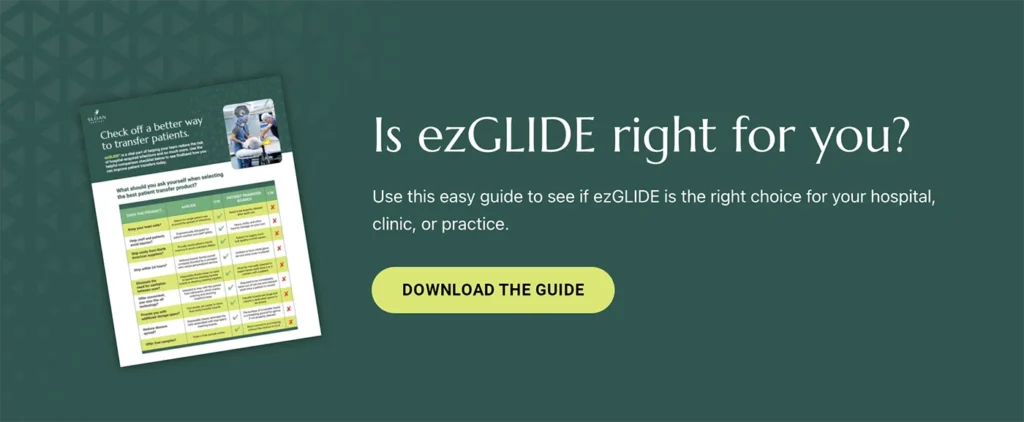
Scrubs Alone vs. Layered Disposable Medical Protective Clothing
Medical scrubs provide basic coverage for healthcare professionals. However, they’re not enough to shield against blood and fluid splashes. You need a few more surgical safety technologies to really shore up your defenses.
In situations where exposure to bodily fluids is likely, medical professionals need extra protection. Layered disposable medical garments, like gowns and shoe covers, come into play here. They cover areas scrubs don’t, ensuring that skin and clothes remain clean and dry. By adding these layers, medical staff are better protected from potential infections. Surgeries and emergency procedures often require this extra gear to maintain a safe environment for both workers and patients.
Squishy Shoes No More: Shoe Covers, Boot Covers, Knee-Highs, and Leggings
Surgical safety technologies like shoe covers and similar protective items are vital for keeping medical environments clean. They’re also crucial for staff safety. Footwear in healthcare environments is prone to contamination from blood and bodily fluids. Shoe covers protect by creating a barrier between expensive shoes and harmful substances. Boot covers and knee-highs extend this protection up the legs, making them ideal for surgeries. Leggings offer coverage where scrubs might not reach. Without these, staff risk soaking their pants and shoes, which can lead to uncomfortable, unhygienic conditions. They’re an easy step that improves overall protection in medical settings.
Premium PPE vs. Bulk Bargain PPE
Investing in premium PPE has significant benefits. Initially, it might seem costlier than bulk alternatives. However, quality PPE lasts longer and performs better. Premium options are often made with superior materials that offer enhanced protection. They fit better, making work more comfortable and efficient. In the long run, spending on premium PPE saves money by reducing replacement frequency and potential healthcare costs from contamination. Bargain PPE might appear practical for budget constraints, but it can compromise safety. The risk to both patients and healthcare professionals is too great with subpar equipment. Choosing quality over quantity is a smart investment for any medical facility.
Dive deeper: Try This, Not That: Comparing Surgical Safety Essentials: Hidden Cost Savings & Better Value With Higher-Quality PPE
Hidden Cost Savings & Better Value With Higher-Quality PPE
When it comes to personal protective equipment (PPE) in healthcare, quality matters. Higher-quality PPE doesn’t just save lives; it also saves money.
By investing in premium PPE, hospitals can prevent costly issues. This includes healthcare-acquired infections and employee absenteeism. Using the right PPE, healthcare facilities can boost surgical efficiency and maintain top-tier safety measures. These smart investments help hospitals stay efficient, safe, and respected. The long-term savings and benefits far outweigh the initial costs.
The Cost of Healthcare-Acquired Infections
Healthcare-acquired infections are a serious issue for hospitals. These infections can spread quickly and affect many people. Investing in better PPE helps keep these infections at bay.
In the U.S. alone, about 1.7 million HAIs happen annually. These infections lead to significant costs for hospitals, often running into the millions of dollars.
For a single hospital, each infection can cost anywhere from $20,000 to over $45,000. This includes additional treatment, extended stays, and other medical expenses.
For example, a single surgical site infection can cost your hospital $25,000. And a bloodstream infection averages $45,000 cost to the hospital per case!
Patients, hospitals, and entire health systems bear the cost of these infections. Premium PPE shields everyone involved and cuts down the risk of spreading germs. When infections are kept to a minimum, hospitals save on treatment costs. Patients also benefit by spending less time recovering. This reduction in infections saves money, boosts patient trust, and keeps hospitals running smoothly.
The Cost of Healthcare Worker Sickness & Absenteeism
We have to keep healthcare workers healthy, or everything falls apart.
Premium PPE plays a key role in this. By offering better protection, it keeps health workers from getting sick. This is important to maintain good staff morale in hospitals. When healthcare workers are healthy, they perform better, and that keeps the hospital team strong. On the other hand, if cheap PPE lets germs through, staff fall sick more often. This leads to costly issues like employee sickness and high turnover rates. Sick staff means hiring temporary replacements, which isn’t cheap.
Estimates show these preventable sick days can cost hospitals thousands of dollars yearly. Each sick day taken by a worker adds up. Imagine if 50 workers take ten days off each year due to infections. That’s 500 sick days!
Stick with premium PPE to keep everyone on their feet and the hospital running smoothly.
The Dollar Value of Your Healthcare Facility’s Reputation
A hospital’s reputation is worth its weight in gold. Patients choose places they trust to use the latest surgical safety technologies to ensure safety and cleanliness. Using high-quality PPE helps maintain this trust. When a hospital is safe, it keeps its good reputation. This reputation brings in more patients, which is good for business.
If your hospital treats Medicare patients, you participate in the Hospital Consumer Assessment of Healthcare Providers and Systems (HCAHPS) scoring program. Your HCAHPS scores are measures of patient satisfaction with hospital care.
Low HCAHPS scores can negatively affect a hospital or health system’s reputation and limit the amount of Medicare funding it receives. In 2019, $1.9 billion in value-based payments was available to hospitals for inpatient care.
Plus, losing a dissatisfied patient can cost a health system nearly $500,000 in lost opportunity over that individual’s lifetime. If that person leaves negative online reviews, that number increases exponentially.
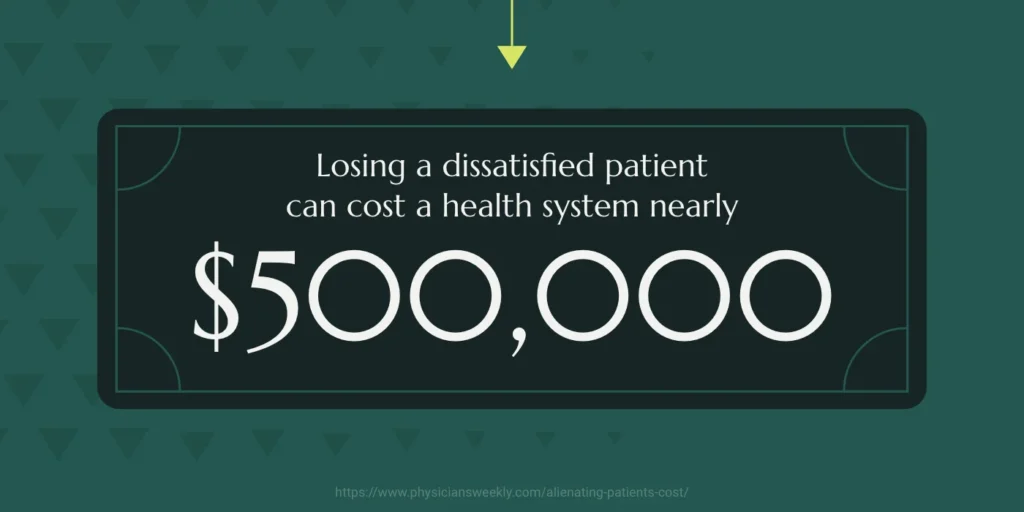
Premium PPE shows that a hospital cares about its patients and staff. This doesn’t just safeguard health; it protects the facility’s reputation, too. In the competitive world of healthcare, a positive image is invaluable.
Surgical Safety Technology and the Importance of Infection Control
Surgical safety technology plays a crucial role in keeping patients and medical professionals safe. Infection control is a top priority in medical settings, especially during surgeries where the risk is higher.
Advanced Personal Protective Equipment (PPE) helps reduce the chances of infection. As healthcare professionals use these technologies, they increase surgical efficiency and patient safety. The goal is to create an environment where infections are less likely to occur. By understanding the importance of infection control, medical teams can better protect themselves and their patients. Surgical PPE isn’t just gear; it’s essential for healthcare safety.
Common Infection Control Challenges
Infection control faces several challenges that healthcare workers deal with daily.
One of the biggest issues is the constant risk of pathogen spread. Healthcare environments inherently expose workers to various infectious agents. Proper hygiene can be tough to maintain all the time, especially during busy shifts. Cross-contamination is another risk when multiple patients or tools share the same space. Also, new strains of bacteria and viruses require updated protective measures.
Sometimes, limited resources or a lack of proper PPE can exacerbate these problems.
How Premium PPE Technology Supports Your Infection Prevention Protocol
Premium PPE technology is a game-changer in infection prevention. With high-quality materials and the latest surgical safety technologies, it provides better protection against pathogens. Medical professionals benefit from improved surgical gear that fits well and is comfortable to wear. This reduces the risk of infection spread and increases focus and efficiency during surgeries.
Furthermore, using disposable, single-patient transfer sheets can decrease cross-contamination risks. These sheets stay with a single patient throughout the many transfers they may need during hospitalization. This keeps infectious material, bodily fluid, and blood contained with the patient and prevents cross-contamination, ensuring cleaner surfaces.
By investing in premium PPE, healthcare facilities can strengthen their infection prevention protocols. This technology not only supports medical safety measures but also boosts overall patient care.
More about surgical safety technologies from our experts: Better Surgical PPE, Better Infection Control: In the O.R. and Beyond
The ROI on Premium Surgical PPE
In 2022, the cost per medically consulted work-related injury was $40,000. Nationwide, injuries and illnesses to nursing aides and orderlies cost the healthcare industry 2.2 billion dollars; costs were 900 million dollars for registered nurses and 40 million dollars for licensed practical nurses. (Pubmed)
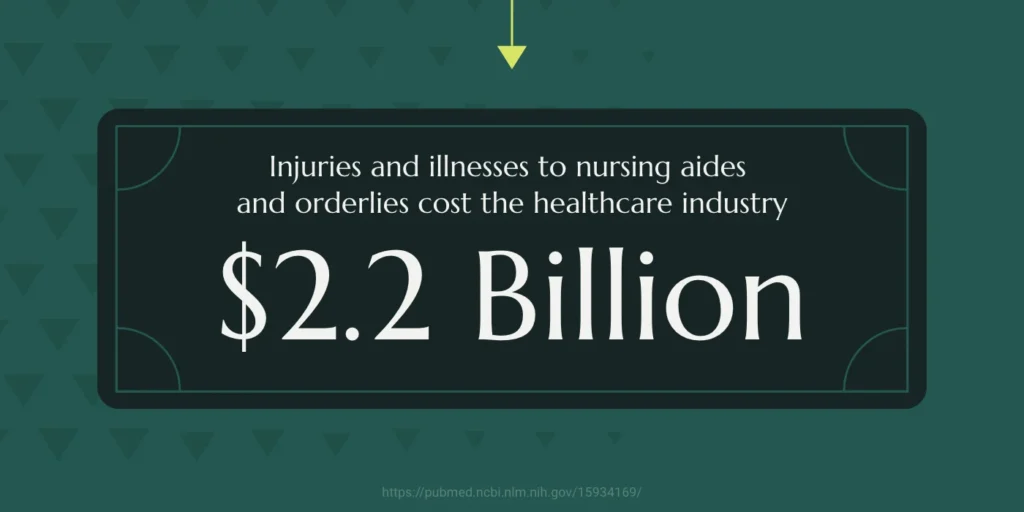
Investing in premium surgical PPE is a smart move for healthcare facilities. These advanced protective gears enhance safety for medical professionals during surgeries and other medical procedures. They keep healthcare workers safe from exposure to hazardous fluids and pathogens. Such investment leads to higher surgical efficiency and reduces risks associated with contamination.
And you’ll earn a return on your investment. Here’s how:
Save on Sickouts, Injury, and Illness
Premium surgical PPE is vital in preventing staff sickness, injuries, and illnesses.
When healthcare workers have the right protective gear, they’re less likely to contract or spread infections. This leads to a healthier workforce with fewer sickouts and absences.
Protective equipment like masks, gowns, gloves, and face shields offer dependable barriers against infectious diseases. By reducing exposure, premium PPE helps staff remain healthy, resulting in fewer disruptions. Medical professionals equipped with high-quality gear can focus more on patient care and less on health risks.
Safeguard Your Staffing Budget
Hospitals can control their staffing budget by preventing injuries and illnesses among staff.
Fewer incidents mean there’s less need for substitute workers, like traveling nurses or temporary staff. This helps in avoiding unnecessary expenses that hospitals might incur to cover absent employees. When staff stay healthy, hospitals save significantly by not having to bring in extra personnel. Premium PPE reduces the chances of staff getting sick or injured, thus safeguarding staffing budgets. This approach supports financial stability while ensuring quality care.
Prevent the Financial Pitfalls of Disrupted Services
Disruptions in healthcare services can be costly. Bloodborne or fluidborne illnesses can lead to staffing shortages and even department shutdowns.
These outbreaks might halt certain medical services. As a result, hospitals face financial challenges. They might lose income due to delayed or canceled procedures. Keeping services running smoothly relies heavily on healthy staff. Surgical safety technologies like premium PPE are a key factor in preventing such disruptions. When a hospital prevents infections, it keeps operations stable. Support staff continuity and ensure reliable healthcare delivery with the right protective measures. Thus, premium PPE is a sound investment for maintaining financial health.
Why STA-DRI?
STA-DRI disposable medical protective clothing is designed to keep surgeons, staff, and patients safe. This clothing provides an effective barrier against blood-borne and fluid-borne illnesses.
- Barrier Protection: STA-DRI blocks fluids and microbes, reducing infection risks. Our STA-DRI line is made from impermeable material with heat-sealed seams – nothing gets through!
- Comfort and Fit: The material is designed with breathable panels that don’t sacrifice protection. Plus, our PPE allows easy movement for medical professionals.
- Convenience: Disposable clothing cuts down the need for laundering. It saves time and resources, boosting surgical efficiency. Reusable gowns are a pain.
- Compliance with Standards: STA-DRI meets ASTM F1671 test standards. This ensures high-level protection and quality.
Our STA-DRI products ensure protection, comfort, and ease of use. They’re a reliable choice for healthcare workers aiming to maintain high medical-surgical safety measures.
Use ezGLIDE for Better Infection Control and Ergonomics
ezGLIDE disposable patient transfer sheets offer several advantages, from better infection control and ergonomics, to the peace of mind you get when you know your products were developed by and for professionals like you:
- Infection Control: ezGLIDE sheets are disposable, which helps in minimizing the spread of infections and diseases among patients. Unlike reusable transfer boards, these sheets are used once and discarded, reducing the risk of cross-contamination.
- Ergonomics: These patient transfer sheets are designed to reduce physical strain on healthcare professionals by providing a more efficient and smoother method for transferring patients. This can help prevent back injuries and other musculoskeletal problems often associated with patient handling.
- Designed by a Healthcare Professional and Perfected with Expert Input: Dr. Stewart Sloan, a urologist, designed the product with direct insights from the healthcare field to meet the specific needs of professionals.
Overall, ezGLIDE patient transfer sheets contribute to a safer and more efficient healthcare environment by addressing both infection control and the physical demands of patient transfer.
Try it Free: Advanced PPE Designed by Surgeons, For Surgeons
As you make the shift to advanced surgical PPE, consider Sloan Medical for your shortlist when choosing surgical safety technologies. Our product lines have been perfected over our 30+ years in business and are guaranteed to perform in all types of environments.
With all our products handcrafted in North America and tested against the ASTM-F1671 standard, we do not cut corners when it comes to protecting medical professionals.
You can order exactly what you need when you need it and protect your cash flow. Our Midwest-based, family-owned company genuinely treasures the healthcare community and values personalized service.
Our PPE is guaranteed to keep surgeons and nurses dry and safe during surgery.

